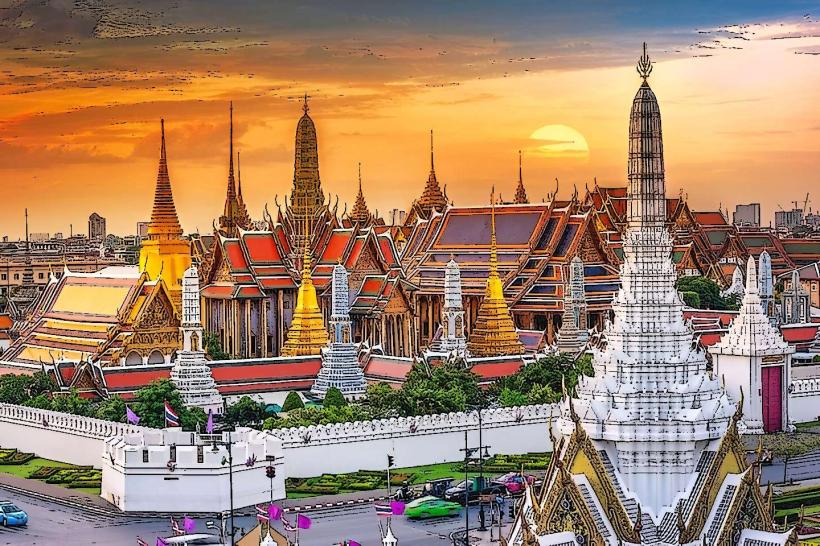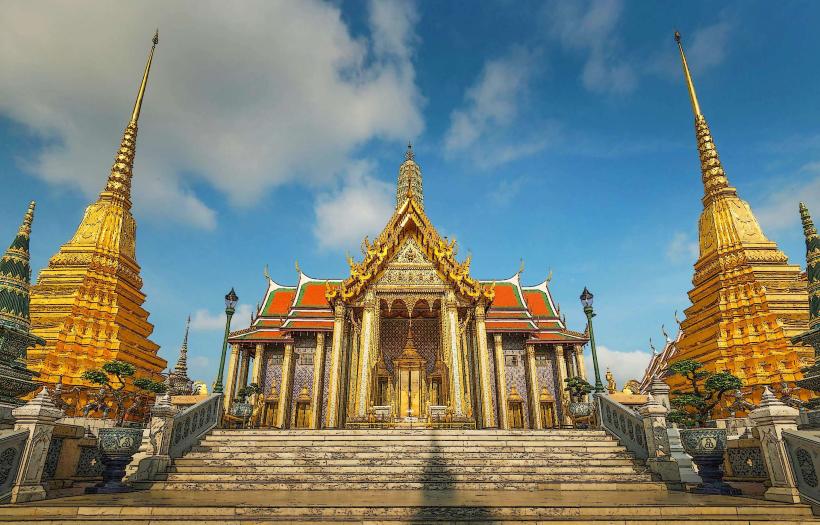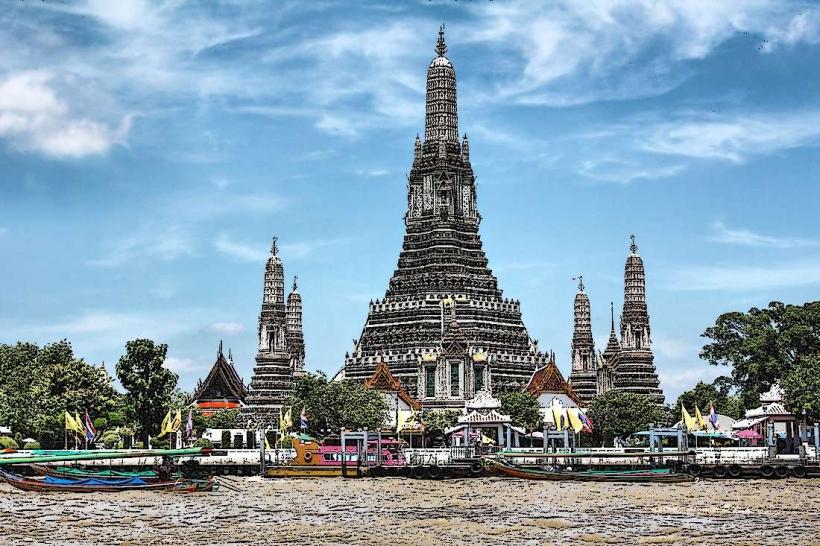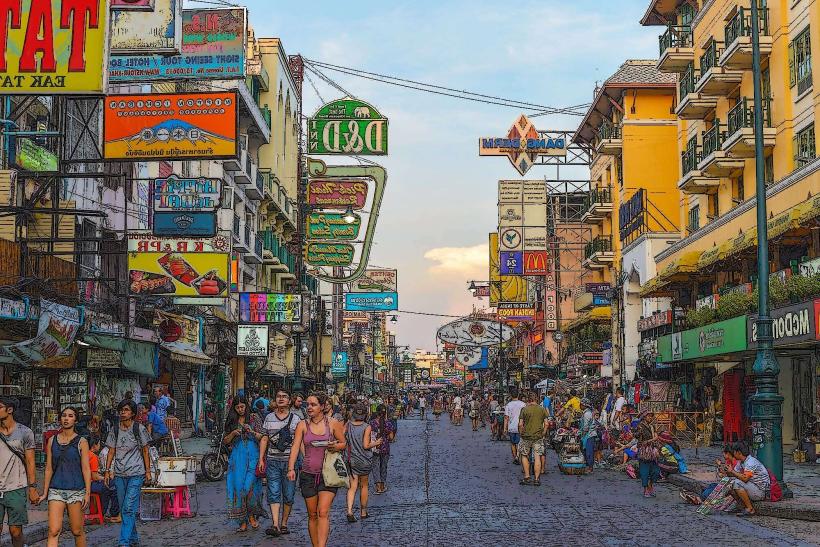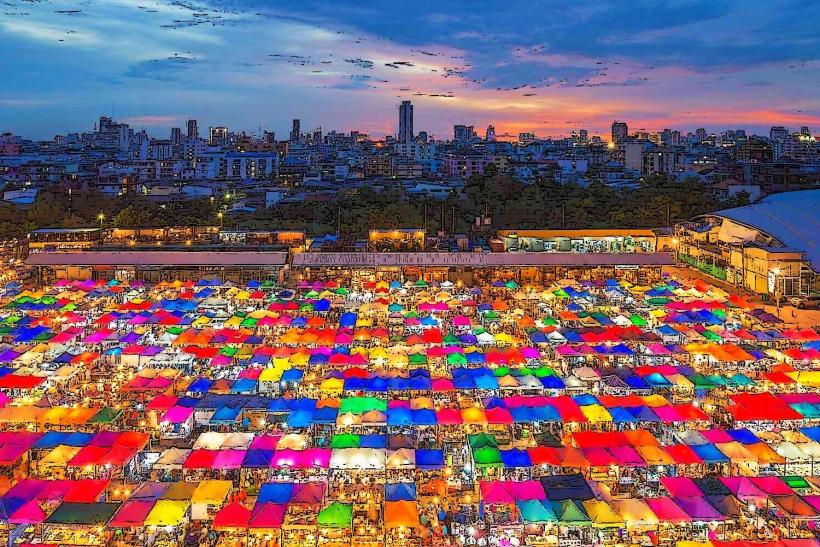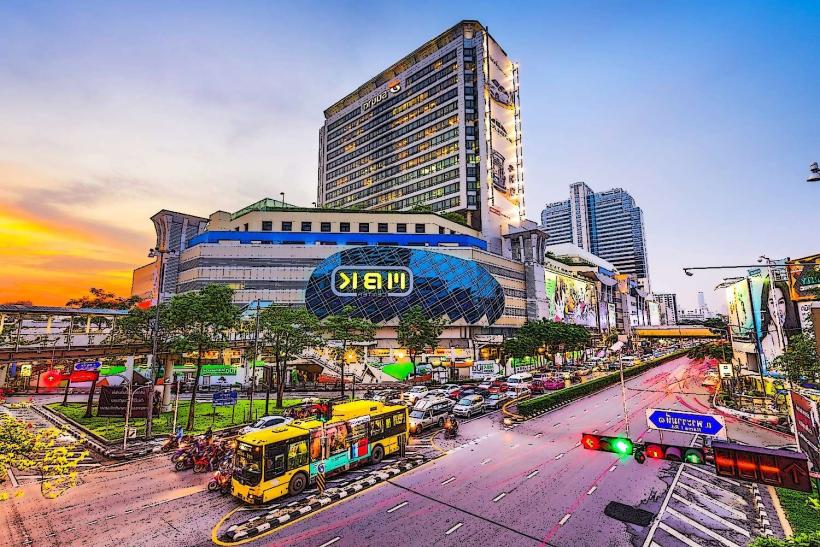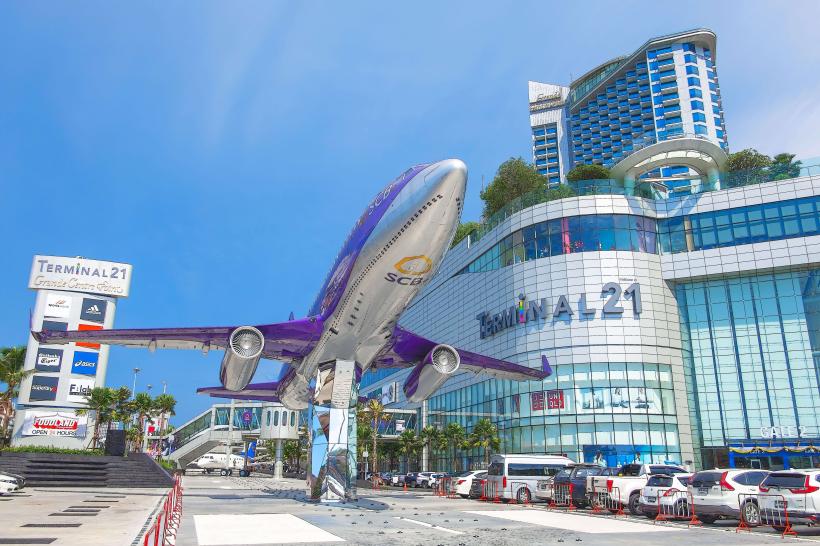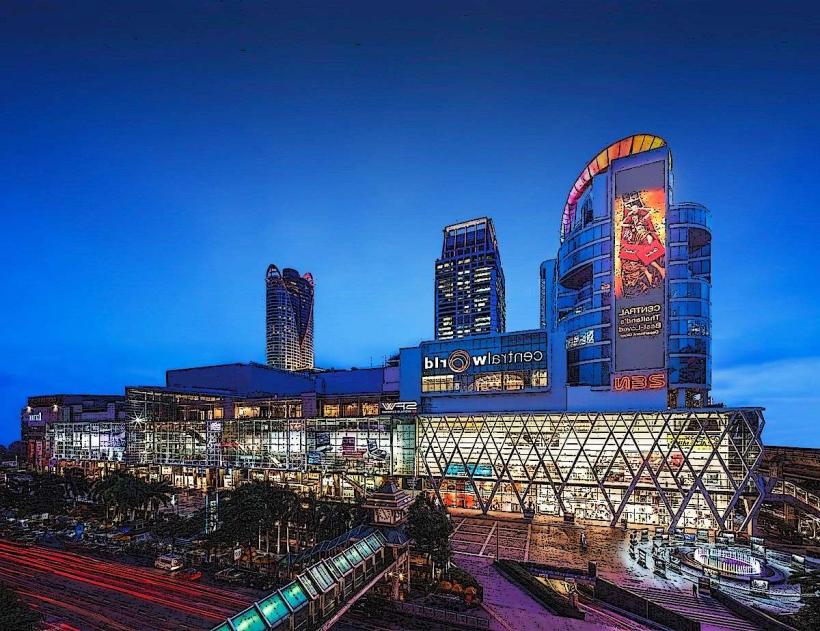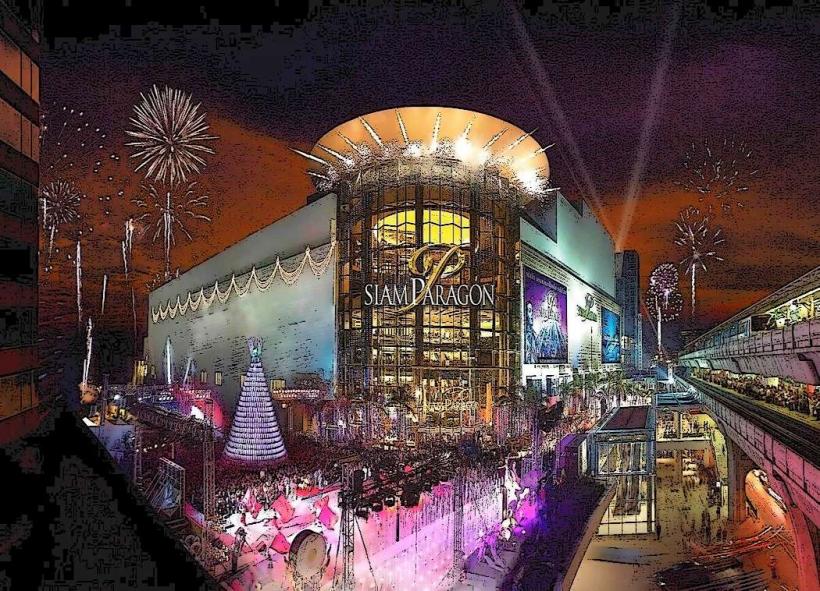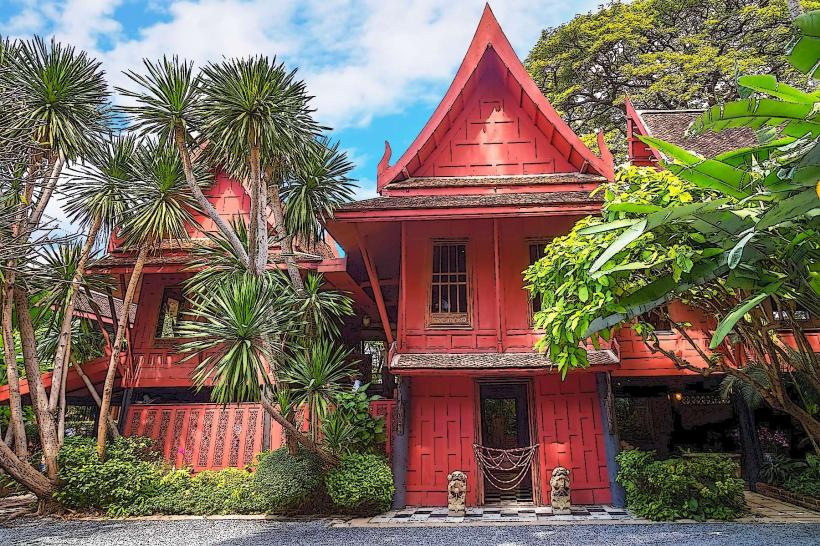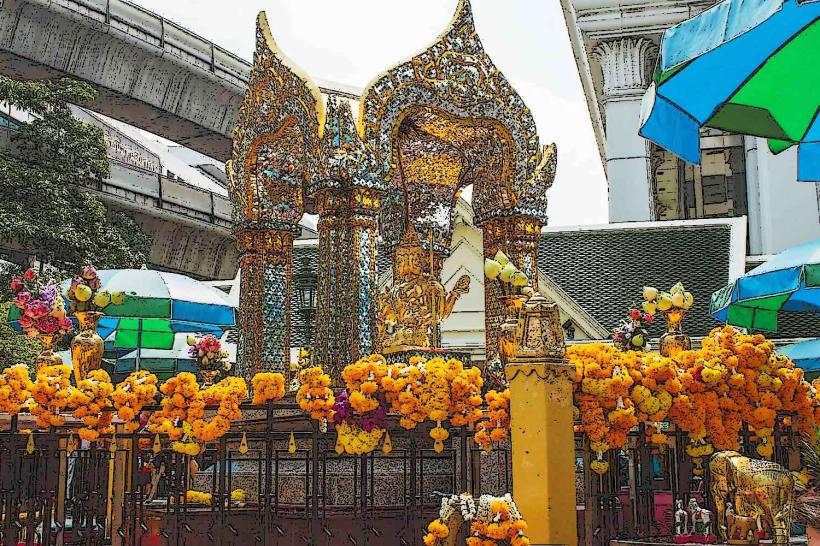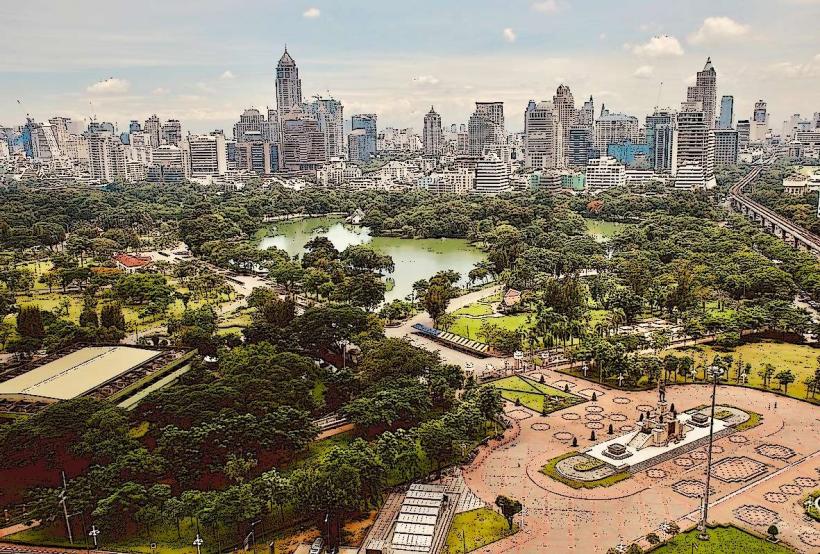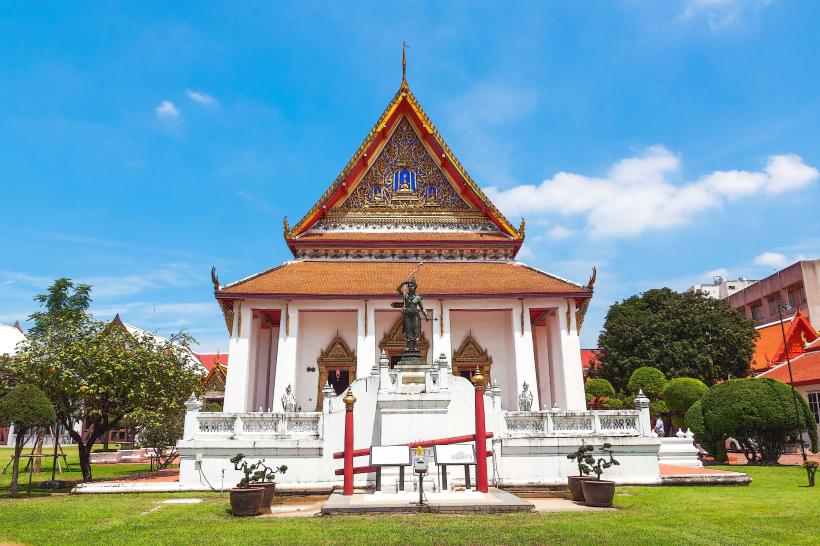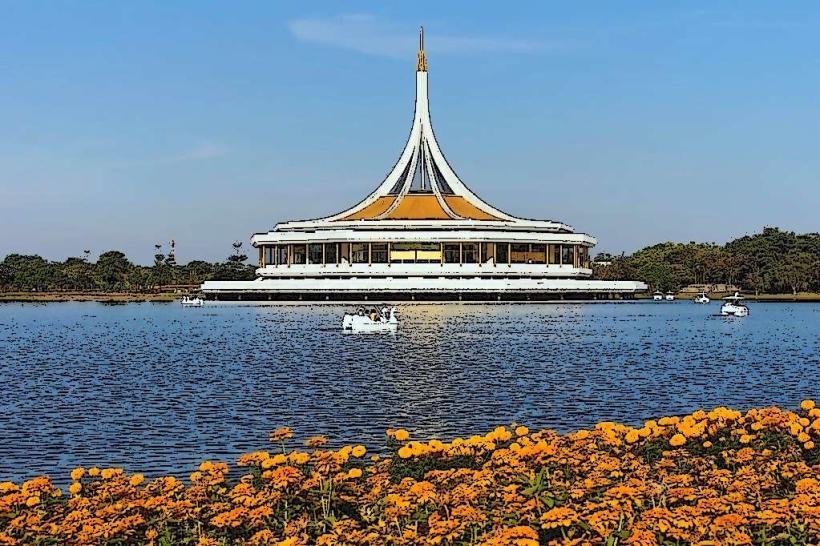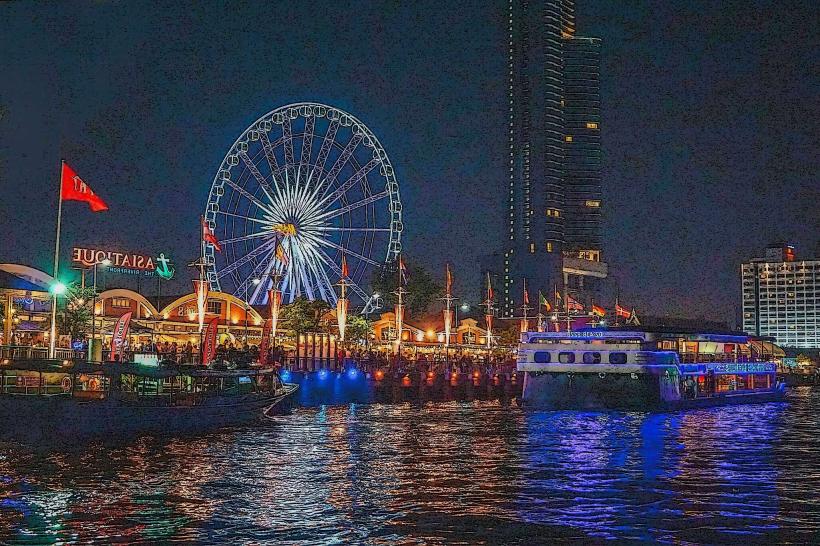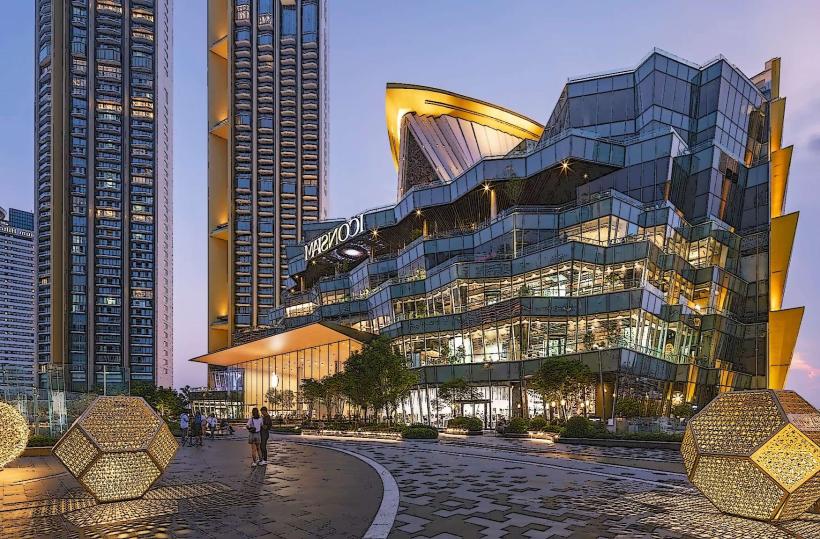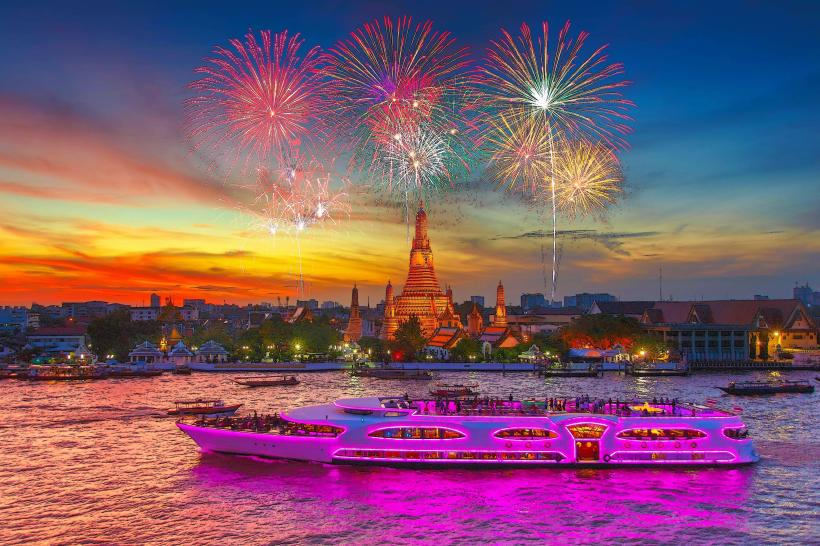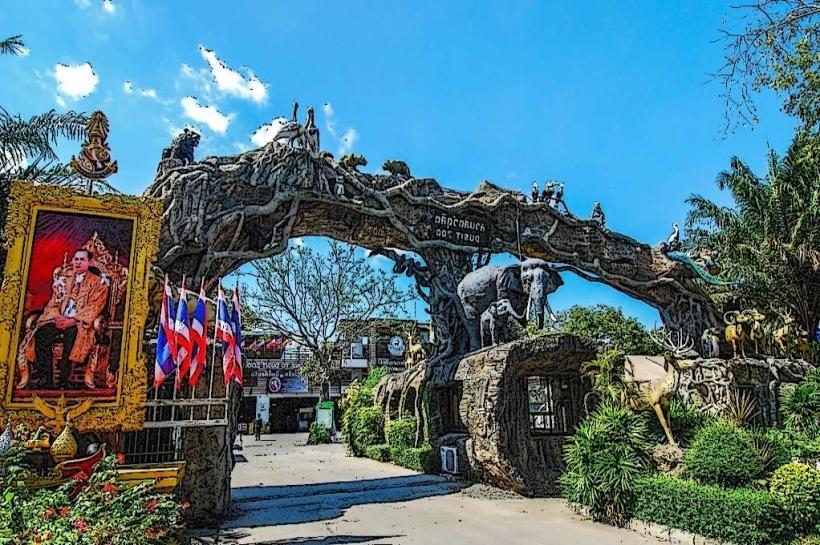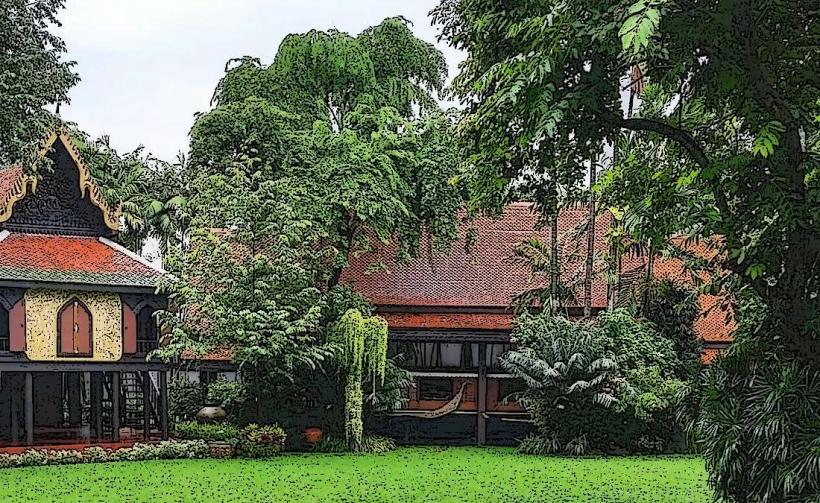Information
Landmark: Wat PhoCity: Bangkok
Country: Thailand
Continent: Asia
Wat Pho – The Temple of the Reclining Buddha
Wat Pho, officially known as Wat Phra Chetuphon Wimon Mangkhalaram Rajwaramahawihan, is one of Bangkok’s most renowned and revered Buddhist temples. Situated near the Grand Palace and Wat Arun, Wat Pho is famous for its majestic Reclining Buddha statue, one of the largest and most impressive in Thailand. The temple is also known as the birthplace of traditional Thai massage and a significant center for learning and preservation of ancient knowledge.
Historical Significance
- Wat Pho is one of the oldest temples in Bangkok, with origins dating back to the 16th century during the Ayutthaya Kingdom. The temple was initially built in King Rama I's reign in the late 18th century, and later expanded and restored during the reign of King Rama III.
- The temple is closely associated with the Siamese monarchy. King Rama I established Wat Pho as an important religious center, while King Rama III expanded the temple complex to include various Buddhist educational elements.
- Wat Pho is considered the first university in Thailand, offering knowledge on subjects such as traditional medicine, astronomy, and Buddhist philosophy.
Architectural Features
1. The Reclining Buddha
- The highlight of Wat Pho is the Reclining Buddha, a massive statue that measures 46 meters (151 feet) in length and 15 meters (49 feet) in height. The statue depicts Buddha lying in the position of Parinirvana, symbolizing the moment when Buddha reaches complete enlightenment and enters Nirvana.
- The Buddha's eyes are made of mother-of-pearl, and the soles of the feet are intricately decorated with lacquer and mother-of-pearl images representing various symbols of Buddhism.
- The statue is housed in a large hall (ubosot), which also features several smaller Buddha statues and beautiful murals along the walls that depict scenes from the Buddha's life.
2. The Ubosot (Ordination Hall)
- The Ubosot is the main ordination hall of the temple, where important Buddhist ceremonies such as ordinations and religious gatherings take place.
- Inside the Ubosot, there is a large seated Buddha statue surrounded by numerous smaller Buddha images and wall murals depicting scenes of Buddhist teachings.
- The hall is beautifully decorated with intricate gold leaf details, adding to the grandeur of the temple.
3. The Chedi (Stupas)
- Wat Pho features several beautiful chedis (stupas), which house the remains of kings and other royal figures. The central chedi is covered in glazed tiles and adorned with gold accents, reflecting traditional Thai architectural style.
- The four chedis surrounding the central one are named after the four Buddhist pilgrimage sites in India: Lumbini, Bodh Gaya, Sarnath, and Kushinagar.
4. The Cloister and Surrounding Temples
- The cloister walls at Wat Pho are lined with hundreds of Buddha images, each one uniquely crafted and serving as representations of Buddha's teachings and philosophy.
- The temple grounds also contain several smaller shrines, pavilions, and statues, each representing different aspects of Buddhism and Thai royal culture.
Cultural and Religious Importance
- Wat Pho is not only a significant religious site but also a center for Buddhist education. The temple houses a number of scriptures, teachings, and religious artifacts that are used by monks and scholars to deepen their understanding of Buddhism.
- As the birthplace of Thai massage, Wat Pho is renowned for its school of traditional Thai medicine. The temple offers courses on Thai massage, which is recognized worldwide for its health benefits.
- The temple is also an important pilgrimage site for Thai Buddhists, and it plays a significant role in maintaining Thailand’s spiritual and cultural heritage.
Wat Pho as a Learning Center
- Wat Pho is known as a center for learning, with many ancient inscriptions and texts found within the temple walls that serve as a repository of knowledge. It is home to many educational materials related to Buddhism, including the Buddhist Tripitaka and other religious texts.
- The Thai Traditional Medicine School located at Wat Pho is a recognized institution for learning Thai traditional medicine and massage. It offers students the opportunity to study acupressure, herbal medicine, and anatomy, based on centuries-old practices.
Visiting Wat Pho
Opening Hours
- Wat Pho is open to visitors daily from 8:00 AM to 6:30 PM.
Entry Fee
- The entrance fee to Wat Pho is 100 Baht (approximately 3 USD). This fee grants visitors access to the entire temple complex, including the Reclining Buddha and the other areas of interest.
Dress Code
- Visitors to Wat Pho are expected to adhere to a modest dress code, as it is a religious site:
- Long pants or skirts (no shorts or skirts above the knee).
- Covered shoulders (no sleeveless tops).
- Closed-toed shoes are required (flip-flops and sandals are not permitted).
- If necessary, visitors can rent or purchase suitable clothing near the entrance.
How to Get There
- Wat Pho is located near the Grand Palace, on the banks of the Chao Phraya River. It is easily accessible by public transportation such as riverboats that dock at the Tha Tien Pier, located near the temple.
- Alternatively, visitors can take a taxi, Tuk-tuk, or motorbike taxi to the temple. The temple is also within walking distance of other prominent landmarks such as the Grand Palace and Wat Arun.
Nearby Attractions
- Grand Palace: Located just a short walk from Wat Pho, the Grand Palace is a must-visit landmark in Bangkok. It is home to Wat Phra Kaew, the Temple of the Emerald Buddha, and is a historical center of Thai culture and monarchy.
- Wat Arun: Also located on the other side of the Chao Phraya River, Wat Arun (Temple of Dawn) is another iconic temple in Bangkok. It is famous for its central prang (spire) and beautiful riverside location.
- Sanam Luang: A large public park and ceremonial ground near the Grand Palace, often used for royal and cultural events.
- Bangkok National Museum: Located nearby, the Bangkok National Museum offers a deep dive into Thai history, art, and culture.
Conclusion
Wat Pho is a treasure trove of Buddhist art, Thai history, and spiritual significance. Its famous Reclining Buddha is a must-see for anyone visiting Bangkok, and its status as the birthplace of Thai massage makes it a unique cultural landmark. The temple is not only a religious site but also an important center for education in traditional Thai medicine and spirituality. Whether you’re exploring the stunning architecture, the intricate murals, or simply soaking in the peaceful atmosphere, Wat Pho offers an enriching and memorable experience for visitors of all backgrounds.

